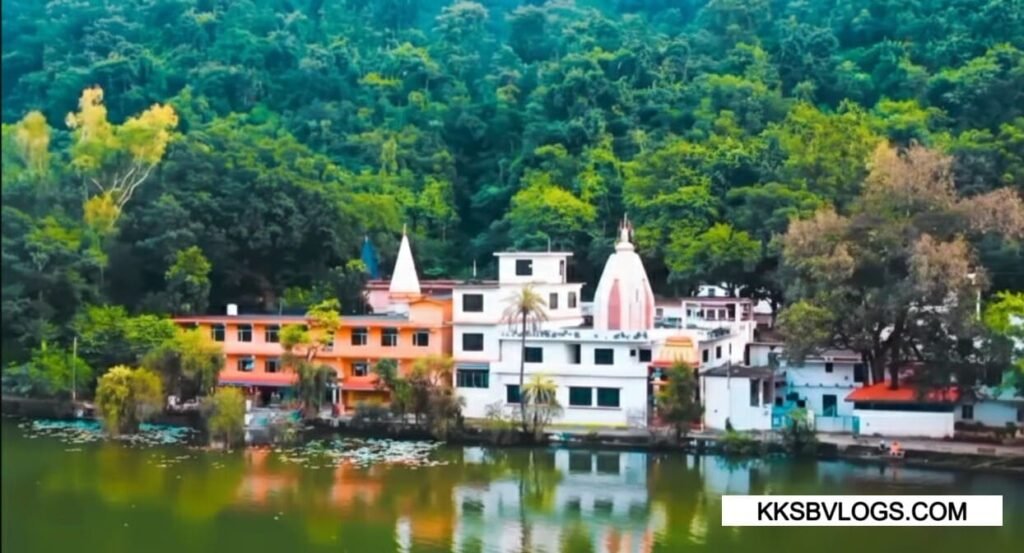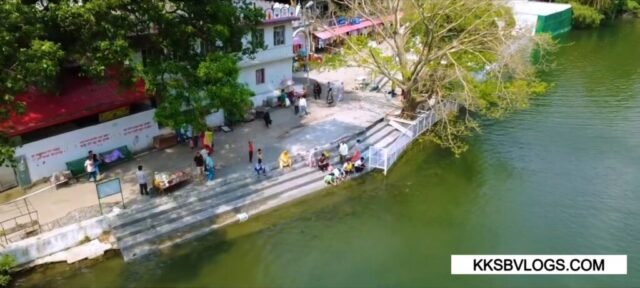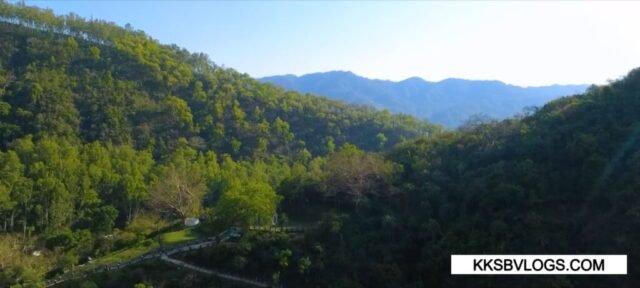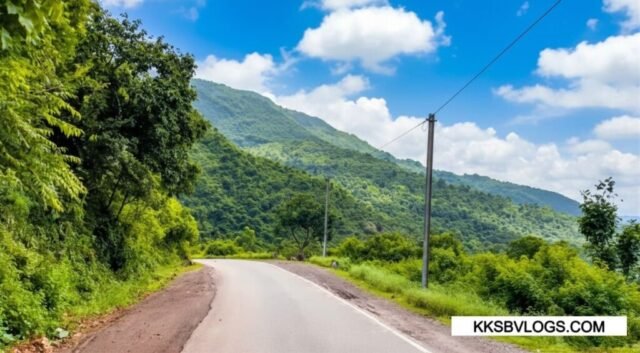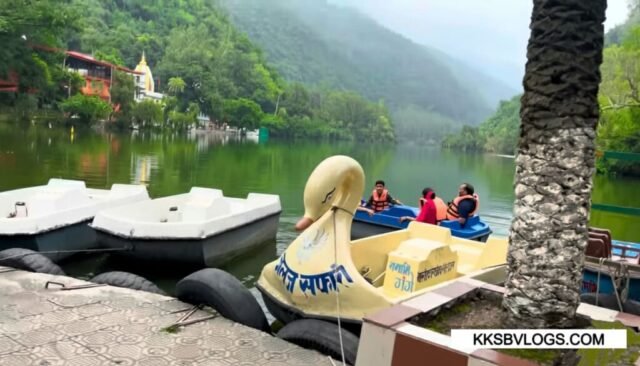1) Introduction
Sirmaur district in Himachal Pradesh is a hidden gem called Renuka Temple & Renuka Lake – where nature and mythology are experienced together. Renuka Lake is Himachal Pradesh’s largest natural lake, situated about 672 m above sea level. Located only 38 km from Nahan and approximately 175 km from Chandigarh, this place is perfect for spiritual darshan as well as nature photography.
As soon as you enter the valley, the dense deodar–pine forest and the emerald green reflection of the lake appear like a real postcard. The soft morning fog, the sound of migratory birds, and the rhythm of temple bells create a truly divine calmness. Renuka Mata Temple in Sirmaur is considered a symbol of a mother’s selfless love and protection. Devotees pray here for mental clarity, family well-being, and travel safety.
This destination is perfect for all who want a peaceful trip away from crowds – whether you are a solo spiritual traveler, a couple, or exploring Himachal with family. In the following blog you will find everything: the history and legends of Renuka Temple, its pagoda-style Himachali architecture, spiritual significance, festivals & fairs (Renuka Ji Mela), the best time to visit, and a detailed travel guide so that you can easily plan your journey.
2) History & Legends of Renuka Temple & Lake
2.1 Mythological Origin
According to Hindu Puranas, the story here is connected with the love of a mother and son. Mata Renuka, wife of Rishi Jamadagni and mother of Lord Vishnu’s avatar Parashurama, was meditating at this very place. After a tragic incident in which her husband was killed, Mata Renuka immersed herself into the vast lake at this site to protect herself. From that moment, this water became Renuka Ji’s Taal, which has never dried up. Devotees even today believe that the water of this lake is sacred, and that bathing in it washes away sins.
2.2 Parashurama’s Vow
It is said that after his mother disappeared, Lord Parashurama came here and promised to meet his mother every year. Since then, every year in November, the Renuka Ji Fair (Prabodhini Ekadashi) is celebrated, where Parashurama ji’s palki (palanquin) is brought from different villages to the banks of the lake. This festival of mother–son reunion is one of the biggest religious events in Himachal Pradesh.
2.3 Royal Patronage & Temple Construction
Historical records show that the kings of Sirmaur always gave patronage to this sacred site. The temple has been renovated many times over the centuries, but the traditional Himachali Kath–Kuni wood-stone style and intricate wooden carvings have been preserved. Even today the wooden artwork and slate roof stand as a living example of old Himachali craftsmanship.
2.4 Sacred Ecology & Community Faith
Local people believe that Renuka Lake itself is the form of the Mother Goddess. Fishing, swimming, or polluting the lake is considered a sin. Surrounding the lake is the Renuka Wildlife Sanctuary, which protects this sacred ecology. The villagers here continue to perform kul devta rituals, mundan ceremonies, and Navratri puja at this place – a faith that is alive across generations.
3) Architecture & Spiritual Significance
3.1 Temple Architecture – Kath–Kuni & Pagoda Style
The design of Renuka Mata Temple is a classic example of Himachali architecture. The temple was built using the Kath–Kuni technique, where wooden beams and local stones interlock, making it earthquake resistant. The multi-tiered pagoda-style sloping roof easily sheds monsoon rains and winter snow. On the doorways and pillars, hand-carved floral motifs and mythological scenes showcase the unmatched skills of local artisans.
3.2 Garbhagriha & Daily Rituals
Inside the sanctum sanctorum, the peaceful idol of Mata Renuka ji is dressed in bright Himachali attire and decorated with gold and silver ornaments. Alongside is a small shrine of Lord Parashurama. During the morning mangal aarti, afternoon bhog, and evening deep aarti, the sound of shankh and bells echoes through the entire lake valley – a divine soundscape that gives every visitor a meditative feeling.
3.3 Renuka Lake – Natural Mandala
In front of the temple lies the 2.5 km circumference Renuka Lake, which looks like a natural mandala. Devotees perform parikrama (ritual walk) and enjoy the changing light from sunrise to sunset. The emerald-green water reflects the deodar hills, lotus blooms float gently, and migratory birds create scenes that are heaven for photographers. 📸 In the evening, there is a tradition of leaving diyas on the lake, which becomes a spiritual offering of wishes.

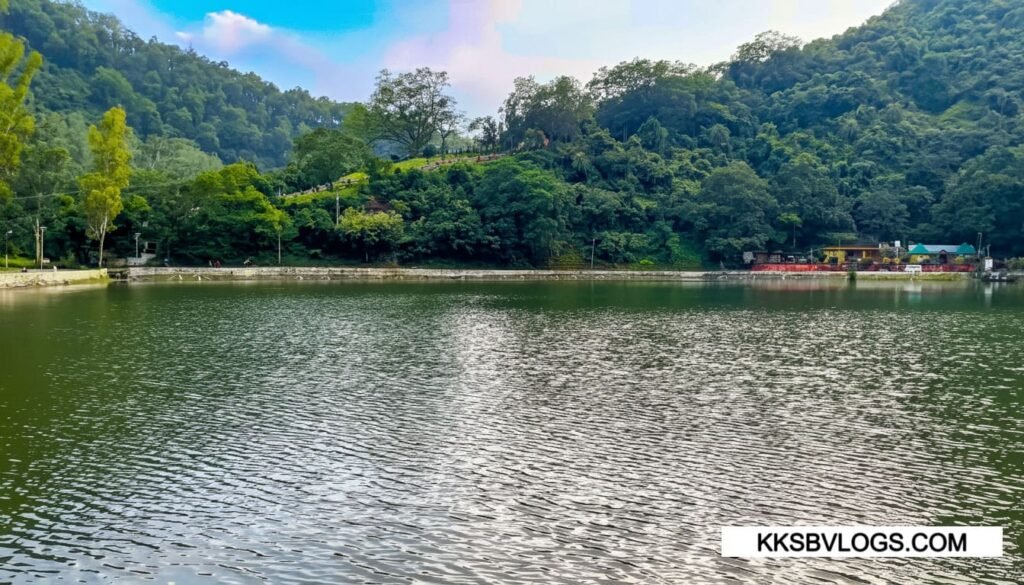
3.4 Spiritual Energy & Healing
Visitors say that as soon as they enter Renuka Ji Himachal Pradesh, they automatically feel a calmness of mind. The combination of high-oxygen forest air and the sacred lake is like a natural healing therapy. The symbolism of the mother’s unconditional love and Parashurama’s devotion makes every darshan here meaningful. Pilgrims believe that prayers made here are especially accepted for family well-being, emotional peace, and travel protection.
4) Things to See at Renuka Temple & Renuka Lake
Renuka Lake in Himachal Pradesh is not only a sacred water site but a complete nature and culture experience where every visitor finds something special—whether you are a spiritual seeker, wildlife lover, or photography enthusiast.
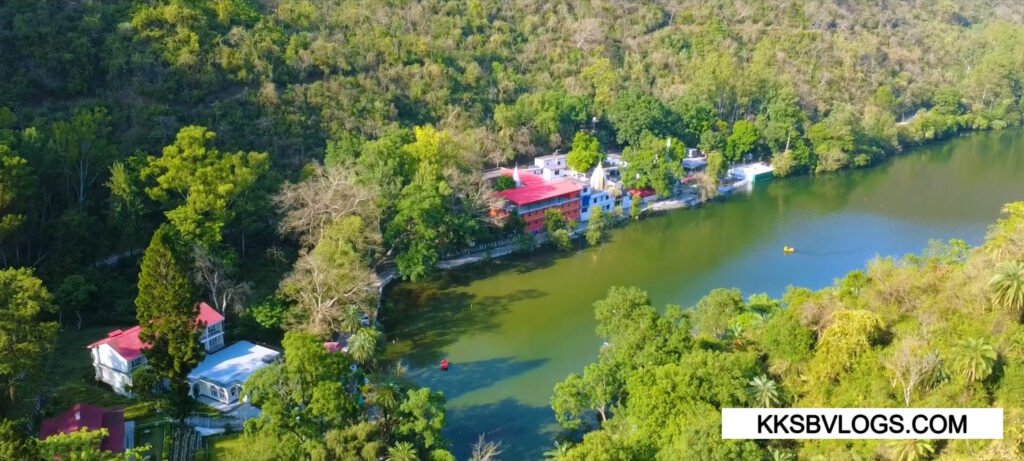
Main Sanctum & Parashurama Temple
The main sanctum and Parashurama Temple form the spiritual heart of the temple complex. Inside the sanctum sanctorum, the serene idol of Mata Renuka is decorated with silver-gold ornaments and traditional Himachali attire. Every day during morning mangal aarti and evening deep aarti, the sound of bells and conch shells fills the Renuka valley with devotion. Right beside the sanctum stands the shrine of Lord Parashurama, which reminds devotees of the eternal bond between mother and son. Here devotees pray for family well-being, wise life decisions, and safe travel.
Renuka Lake Parikrama & Boating
The Renuka Lake parikrama and boating experience is equally memorable. The 2.5 km circumference of the lake offers a natural parikrama path. Walking here in the early morning or at sunset feels like meditative therapy. At every step, the calm water mirrors the surrounding deodar hills, creating endless postcard-perfect views. Visitors can enjoy pedal boating or shikara rides (about ₹50–100). Reaching the middle of the lake by boat provides a close view of migratory birds and blooming lotuses.
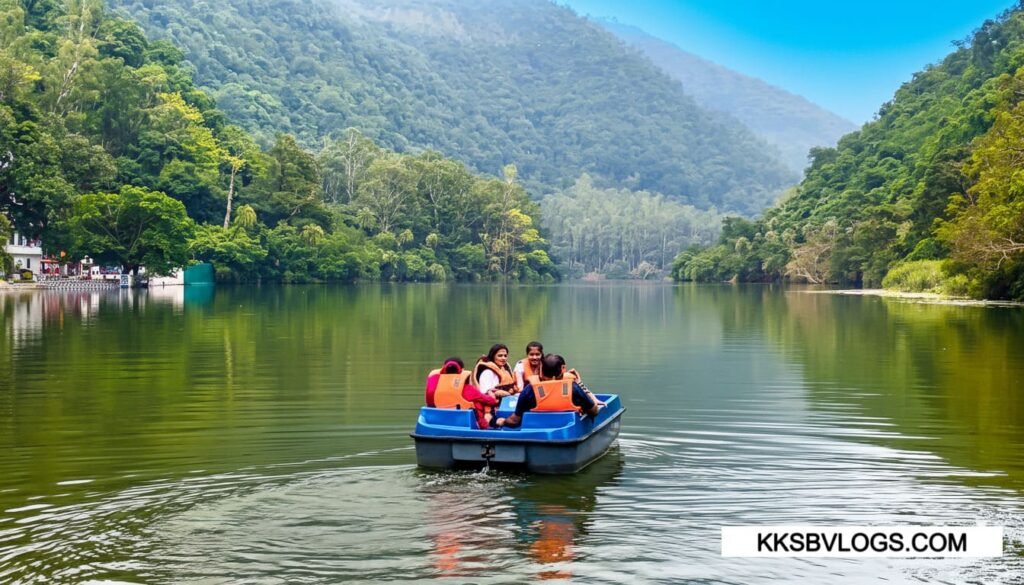
Renuka Wildlife Sanctuary
Surrounding the temple is the Renuka Wildlife Sanctuary, which shelters sambhar, spotted deer, langurs, and numerous Himalayan birds. A small mini-zoo inside the sanctuary is a favourite with children. Early morning birdwatching often rewards visitors with sights of Himalayan woodpeckers and colourful kingfishers.
Lotus & Water Lily Belt
On the edges of the lake lies a magical lotus and water lily belt, where pink lotuses and white water lilies create natural frames for photography lovers. After the monsoon, these flowers reach their peak bloom and move gently with the water’s ripples, giving the feeling of a living painting.
Hilltop Sunrise & Sunset Viewpoints
Above the lake, forested hilltop ridges hide some natural sunrise and sunset viewpoints. From here, visitors enjoy a full aerial view of the emerald-green lake, especially during the golden hour when sunlight sparkles on the water like molten gold.


Renuka Ji Fair (November)
Every November, the surroundings of the temple come alive with the Renuka Ji fair, when the temple complex is filled with Himachali folk music, dance performances, and colourful handicraft stalls. Here visitors can buy Kullu shawls, Himachali caps, wooden handicrafts, and local organic honey, while enjoying the taste of traditional Himachali dham (local festive meal).
🌸5) Festivals & Celebrations at Renuka Temple & Renuka Lake
Renuka Ji Temple in Sirmaur is not only a sacred spiritual site but also one of Himachal Pradesh’s most vibrant cultural centres. Throughout the year, many festivals celebrate local traditions and ancient legends. Planning your trip to Renuka Lake during festival time offers the chance to experience spiritual devotion alongside Himachali folk music, dance, and food.
The most famous celebration is the Renuka Ji Fair (Prabodhini Ekadashi), usually held in the first half of November. This fair is based on the mythological story of Lord Parashurama visiting his mother Mata Renuka every year. During this time, decorated palanquins (palkis) carrying Lord Parashurama are brought from nearby villages to the Renuka Temple. The grand journey ends at the lake, symbolising the mother–son reunion.
During the three to five days of this fair, the entire complex becomes festive:
- Bhajan and Kirtan evenings fill the air with devotional music and traditional nagada drums.
- Himachali folk dances (like Nati) and colourful traditional costumes give tourists a true taste of the local heritage.
- Handicraft and food stalls sell Kullu shawls, wooden carvings, Kangra tea, local honey, and serve the famous Himachali dham (traditional meal).
- Early every morning, devotees take a holy dip in the lake, believed to cleanse them spiritually.
This fair turns Renuka Temple Sirmaur into a living cultural festival, where thousands of devotees and travellers gather to sing the praises of the Mother Goddess.
The temple is also beautifully alive during Navratri and Ashtami celebrations (March–April and September–October). Each day there are special havans, bhajans, and aarti ceremonies. Local families perform kanya pujan and Navgraha shanti rituals. The entire temple complex is decorated with flowers, lights, and colourful rangoli. During this time, the atmosphere is filled with devotion and Himachali tradition, and on Ashtami and Purnima, special puja and bhandara (community feast) are held, where devotees offer prasad at the feet of the goddess.
Whether during the Renuka Ji Fair or Navratri, community bhandara and langar remain a constant tradition. The temple trust and local villagers organise free meals for everyone, making it a beautiful Himachali community experience of warm hospitality.
✨ Photography & Visitor Tips During Festivals
- Best Time to Visit: Early morning, to witness the palki yatra and holy dip without heavy crowds.
- What to Carry: Warm clothes (November mornings can be chilly), comfortable shoes, and a camera for capturing cultural moments.
- Stay Alert: During fair days, road traffic is heavy, so it is wise to book Nahan or nearby homestays in advance.
🌸 Summary for Travelers
The festivals of Renuka Temple create a time when spiritual devotion, local music, dance, Himachali cuisine, and traditional handicrafts all meet in one space. Anyone wishing for a deep cultural experience of Himachal must include the Renuka Ji Mela in their travel bucket list.
6) How to Reach Renuka Temple & Renuka Lake
Renuka Temple in Sirmaur, Himachal Pradesh is well connected and easy to reach by road, rail, or air.
📍 Location: Near Dadahu town, altitude ~672 m.
Distances: Nahan 38 km, Solan 95 km, Shimla 123 km, Chandigarh 175 km, Delhi 300 km.
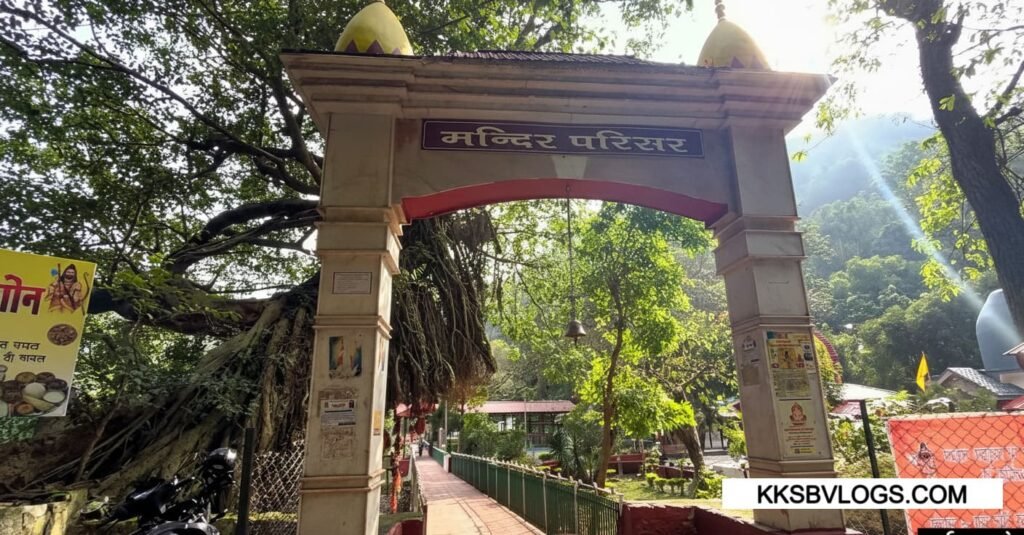
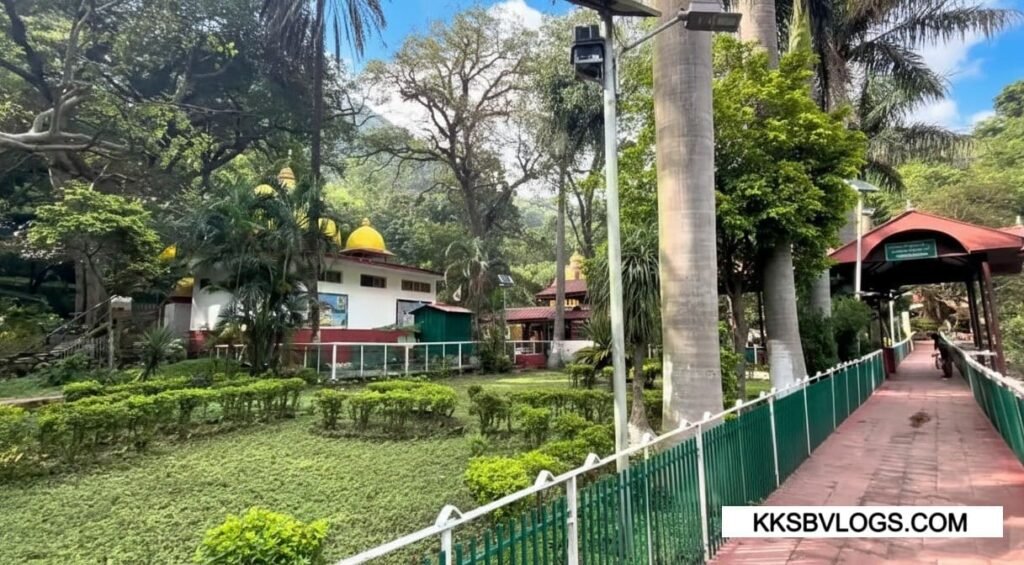
🚗 By Road – Best Option
The most convenient way is a road trip. From Chandigarh it’s about 5–6 hrs via Kala Amb and Nahan; from Delhi around 8–9 hrs via NH44 + NH7; from Shimla/Solan about 4–5 hrs. Regular HRTC buses and taxis run to Nahan, with easy local connections to Renuka Ji.
💡 Tip: The last 8–10 km are curvy hill roads—drive carefully, especially in the monsoon.
🚆 By Train
No direct trains. Nearest major stations: Ambala Cantt (105 km) and Chandigarh (110 km). From there, take a cab or bus. A scenic alternative is the Kalka–Shimla toy train to Barog/Kumarhatti, then continue by road.
✈️ By Air
Nearest airport: Chandigarh International (130 km). From Chandigarh, a cab or Volvo bus to Nahan (3.5–4 hrs) and then a short taxi/bus ride will bring you to Renuka Lake. Shimla’s Jubbarhatti Airport is another option with limited flights.
🚶 Local Mobility
The temple and lake share the same campus, so walking is ideal. Small rickshaws and local taxis are available, and well-marked paths lead to the wildlife sanctuary and mini-zoo.
⚠️ Quick Visitor Tips
Last buses leave around 6–7 pm—plan your return accordingly.
Road travel is safest for families and seniors.
Carry rain gear and non-slip shoes in the monsoon.
7) Best Time to Visit Renuka Temple & Renuka Lake
Renuka Lake in Himachal Pradesh remains beautiful throughout the year, but each season has its own flavour.
From March to June (Summer) the temperature stays between 15 – 28 °C, giving pleasant weather and clear blue skies, perfect for boating, photography, and wildlife walks. (This is the best time to visit Renuka Lake for photography).
From July to September (Monsoon) the temperature remains 18 – 24 °C. The forests turn deep green and clouds create a mystical look, though roads can be slippery—so carry a raincoat and good shoes. (Enjoy the special Renuka Lake monsoon view).
From October to November (Festival Season) the temperature is around 12 – 20 °C, and the grand Renuka Ji Fair with palki yatra, bhajans, and Himachali food takes place. Book your stay in advance to experience the Renuka Ji fair Sirmaur Himachal Pradesh.
From December to February (Winter) the temperature drops to 4 – 15 °C. The mornings are misty, migratory birds arrive, and the whole area feels quiet and spiritually charged. Warm clothes are essential. (Perfect for Renuka Lake winter photography).
💡 Pro Tip: Morning between 7–10 am is the most peaceful and photogenic time of the day.
8) Visitor Information
- Temple Timings: 6:00 am – 7:00 pm
- Entry Fee: Free (boating around ₹50–100, mini-zoo has a small ticket)
- Facilities: Ample parking, clean washrooms, drinking water, prasad and snack stalls, well-marked walking paths
- Dress Code: Modest clothing; summer casuals and warm jackets in winter; wear comfortable walking shoes
- Average Time Required: Around 2–3 hours for darshan, lake parikrama, and boating
⚠️ Safety Tips
- During the monsoon, the road can be slippery, so drive carefully.
- Avoid feeding animals inside the wildlife zone.
- Plan your return early evening, as last buses leave around 6–7 pm.
9) Our Experience – Renuka Temple & Renuka Lake
Our journey to Renuka Temple in Sirmaur was a true experience of spiritual energy and natural beauty. We started early morning from Nahan, and as the car descended into the Renuka Lake valley, the dense deodar and chir pine forests welcomed us with their fresh earthy fragrance.
The very first sight of the emerald-green Renuka Lake, glowing silver under the first rays of the sun, looked like a perfect postcard scene. From the temple entrance, the sound of aarti bells and the fragrance of incense created an immediate divine feeling. Sitting inside the sanctum of Mata Renuka ji, the peace and calm were beyond words. It felt as though the Mother herself was blessing every visitor with her loving presence.
Beside the main sanctum, the shrine of Lord Parashurama stood as a powerful reminder of the eternal bond between mother and son.
After darshan, we performed a full parikrama of Renuka Lake, walking the 2.5 km trail that circles the water. The morning light reflected the deodar forests perfectly in the calm water, and the calls of migratory birds like pochards and kingfishers made the walk even more peaceful.
Boating on the serene lake was another highlight. Drifting in a pedal boat, watching lotus flowers and floating diyas, felt like a kind of spiritual therapy.
A special delight was to experience the local Himachali culture up close. Village women were singing folk songs, and people were decorating the area for the Renuka Ji fair. Some devotees were taking a holy dip in the lake, while others distributed prasad. This made us realise that Renuka Temple in Himachal Pradesh is not just a religious spot but a living tradition passed down through generations, where nature and devotion go hand in hand.
As evening approached, the golden sunset spread a soft glow across the lake. The gentle ringing of temple bells mixed with the silence of the forest created a deeply meditative atmosphere. We sat on a stone plinth, feeling the cool air and the tranquil energy of the lake—a moment that became a lifetime memory.
10) Nearby Attractions
Around Renuka Temple & Renuka Lake, many beautiful spots can enrich your trip with nature, history, and spirituality.
1️⃣ Suketi Fossil Park – ~60 km
Asia’s first fossil park, with life-size fiberglass models of prehistoric animals. It contains millions of years old Shivalik fossils, exciting for both science lovers and children. A short forest trail makes this a quick half-day science-cum-nature visit.
2️⃣ Paonta Sahib – ~50 km
A historic Sikh pilgrimage site on the Yamuna river, where Guru Gobind Singh ji held his court. Inside the gurudwara you can see rare weapons and handwritten scriptures. The river-side langar and evening ardas are spiritual highlights.
3️⃣ Haripur Dhar – ~55 km
A hilltop fort town with a 360° panoramic view of the Shivalik hills. The Mahadev Temple and old fort ruins are ideal for trekking and photography, perfect for those seeking both adventure and spirituality.
4️⃣ Churdhar Peak – ~140 km
The highest peak of the Shivalik range (11,965 ft) and a dream destination for hardcore trekkers. The trek passes through dense forests and alpine meadows to a summit with breathtaking views of the snow-capped Himalayas. Best season: June–October.
5️⃣ Nahan Town – ~38 km
A heritage hill town with colonial-era buildings, the serene Rani Tal garden, lively local bazaars, and peaceful walking trails. Strolling the market in the evening and tasting Himachali street food is a must.
💡 Travel Tip: You can easily combine a Renuka Ji visit with Suketi Fossil Park or Nahan on the same day. For Paonta Sahib, Haripur Dhar, or Churdhar Peak, plan half-day to full-day extra trips.
Renuka Temple & Renuka Lake Location, Photos & Video
YouTube Video:Coming soon on – KKSB Vlogs
Instagram Updates: Stay connected with us for reels and updates– @official_kksb
Renuka Temple & Renuka Lake Photos
Renuka Temple & Renuka Lake Location
🙋♀️11) FAQs about Renuka Temple & Renuka Lake
Where is Renuka Temple & Lake located?
Renuka Temple & Lake are in Sirmaur district of Himachal Pradesh, near Dadahu town. The site lies about 38 km from Nahan, 131 km from Chandigarh, and 295 km from Delhi, surrounded by dense deodar and pine forests at an altitude of around 672 m.
Which deity is worshipped at Renuka Temple?
The temple is dedicated to Mata Renuka Ji, believed to be the mother of Lord Parashurama (sixth incarnation of Lord Vishnu) and an incarnation of Shakti. A small adjoining shrine of Lord Parashurama symbolises the eternal mother–son bond.
Why is Renuka Lake considered sacred?
According to legend, Mata Renuka dissolved into this lake after her husband Rishi Jamadagni’s death. Devotees believe the lake holds her divine presence. Taking a holy dip here is said to wash away sins and bring peace and prosperity to families.
What is special about Renuka Ji Fair?
The Renuka Ji Fair (Prabodhini Ekadashi) in November celebrates Parashurama’s yearly visit to meet his mother. Decorated palanquins from nearby villages reach the lake amid bhajans, folk dances, handicraft stalls, and a sacred lake dip, drawing thousands of devotees.
How can travellers reach Renuka Temple & Lake?
The easiest way is by road via Nahan with direct buses and taxis from Chandigarh, Delhi, Shimla, and Solan. Nearest railway stations are Ambala Cantt (150 km) and Chandigarh (165 km). The nearest airport is Chandigarh International (165 km), with taxis or buses connecting to Nahan.
What activities can visitors enjoy besides temple darshan?
Visitors can do a 2.5 km parikrama around the lake, enjoy boating or shikara rides, and explore the Renuka Wildlife Sanctuary and mini-zoo. Nature lovers can capture lotus blooms, migratory birds, and hilltop sunrise/sunset views, or shop for Himachali handicrafts during the fair.
Which is the best time to visit Renuka Lake?
The site is beautiful year-round. March–June offers clear skies and pleasant weather for boating and photography. October–November brings the grand Renuka Ji Fair, while December–February offers quiet misty mornings and migratory birds. Early morning (7–10 am) is ideal for peace and photos.
Are there facilities and safety tips for visitors?
Yes—there is ample parking, clean washrooms, prasad and snack stalls, and marked walking paths. Wear modest, comfortable clothes, carry warm layers in winter, and avoid feeding wildlife. In monsoon, roads may be slippery, and the last buses leave around 6–7 pm, so plan your return accordingly.

